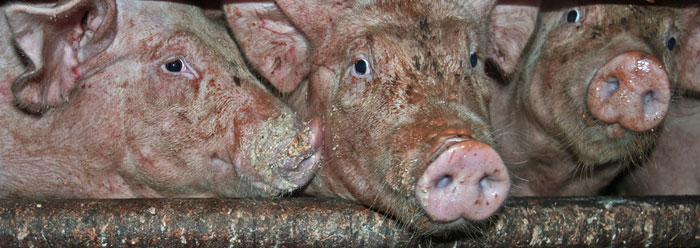Flu is in the news, with some people fearing a possible pandemic from the latest strain. The most recent threat, initially labeled “swine flu,” comes from an H1N1 influenza virus, the same “subtype” responsible for the horrendous 1918 Spanish influenza outbreak. What makes this virus new is that it traded parts with other flu viruses and mutated. However, neither of these processes demonstrates Darwinian evolution.
This subtype is the most common cause of flu symptoms in humans. Many types of influenza viruses target certain animal kinds, such as birds or mammals, and even certain tissues. New variations of the virus can arise from infected animals. If a pig is already sick with an H1N1 subtype and then acquires infection from another animal, like a bird, then that pig’s cells provide a “melting pot” for the viral parts to mix and match. This could result in a brand new viral particle that could cause an epidemic if it can then be transmitted from person to person.
The potential for virulence is increased by the fact that the viral molecules undergo rapid mutation rates when being mass produced in cells. This occurs because the production speed of viral components is such that the system generating them does not take the extra time to correct any genetic errors, as would normally occur whenever cellular genetic material is manipulated. This mutational process is typically called “evolution,” a reference that can easily lead to a straw-man argument with major implications.1
Is this process truly evolution in the Darwinian sense of a lower-to-higher developmental progression? The mutation of viral proteins has gone on for thousands of years without having invented a non-virus. This is because these mutations only corrupt or alter pre-existing viral coding information. They do not lead to new organisms, organs, tissues, cells, biochemical networks, or even whole, novel proteins.
Mutations are observed, so their existence is scientifically verifiable and factual. The story asserting that these changes are critical to eventually creating whole new organisms is not observed and therefore remains—at best—unsupported speculation.
Despite claims to the contrary, influenza viruses are not “evolving.” To be scientifically honest, they are only rapidly mutating, a situation that doesn’t fill the missing mechanisms of a Darwinian picture of life evolving into ever-more specified forms of complexity. But it does line up with the biblical depiction of a once “very good” world that now suffers from death and decay because of the curse brought about by man’s sin.2
References
- For example, “flu strains…constantly evolve.” Wuethrich, B. 2003. Chasing the Fickle Swine Flu. Science. 299 (5612): 1502.
- Genesis 3:17-19.
* Mr. Thomas is Science Writer at the Institute for Creation Research.
Article posted on May 4, 2009.
























